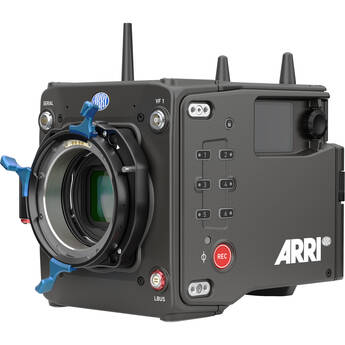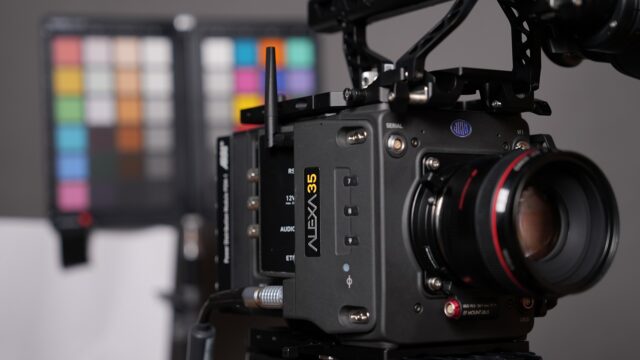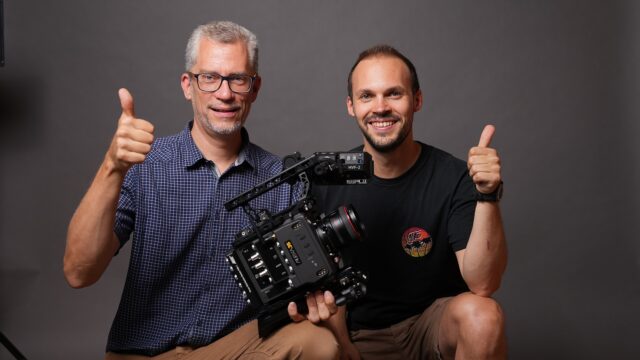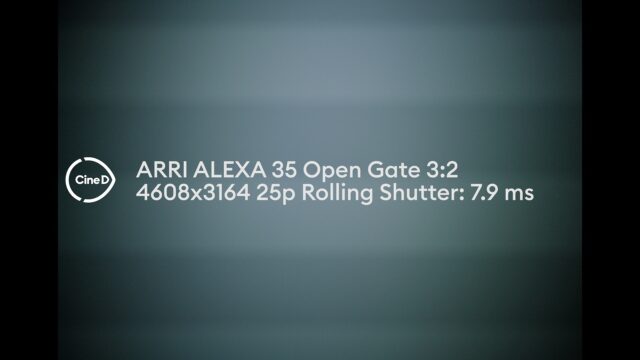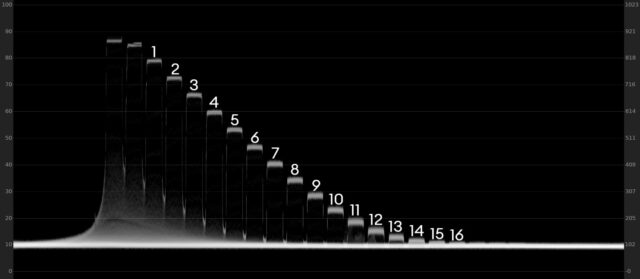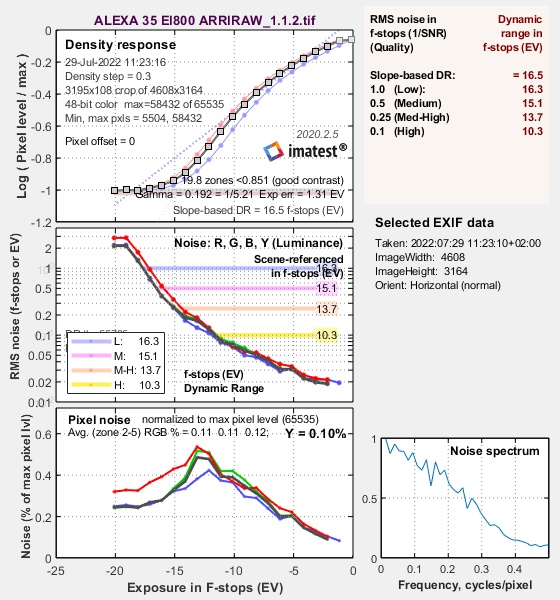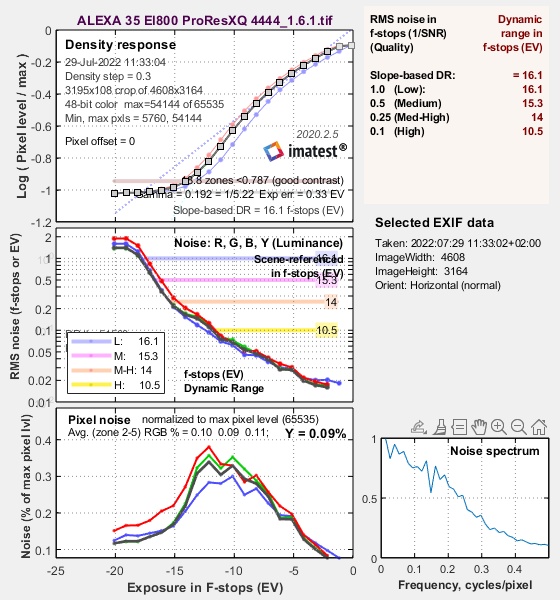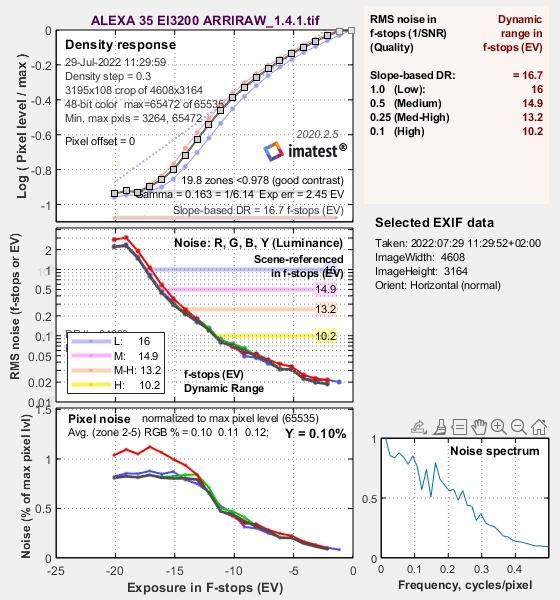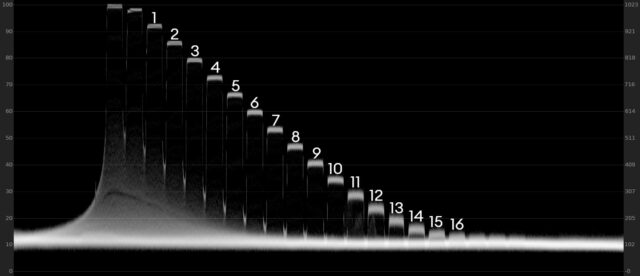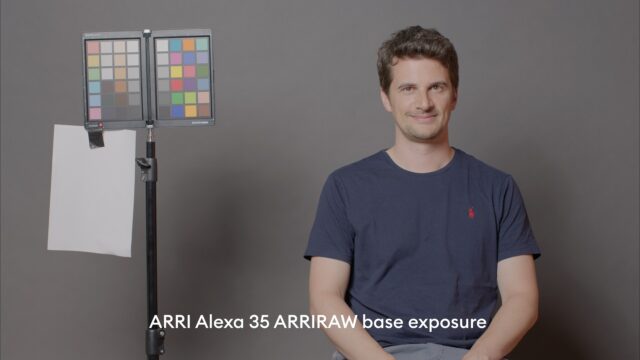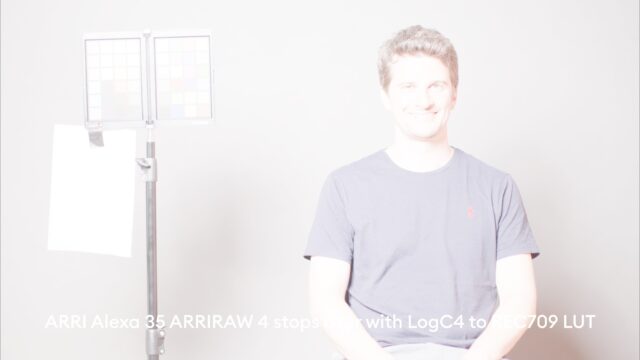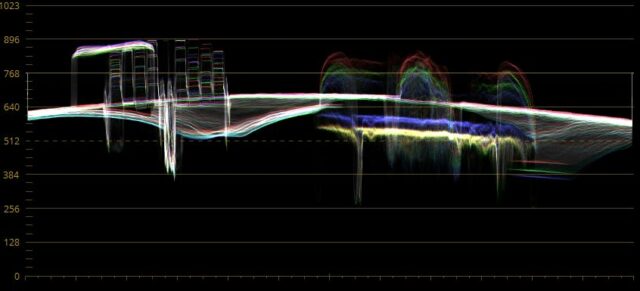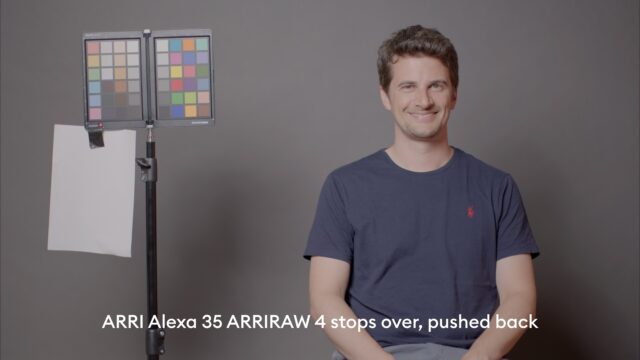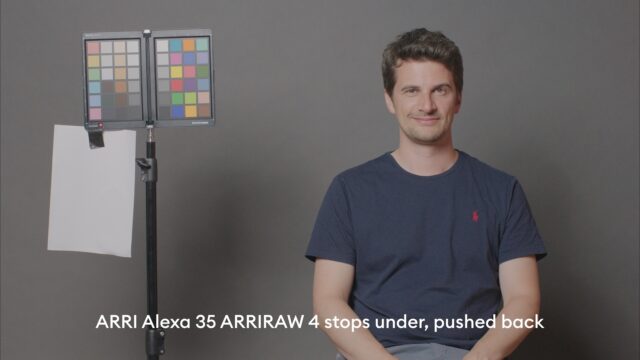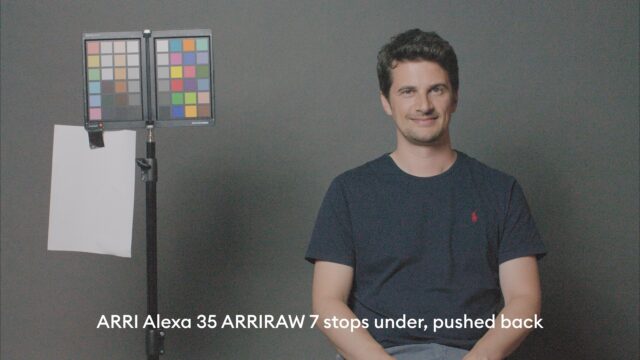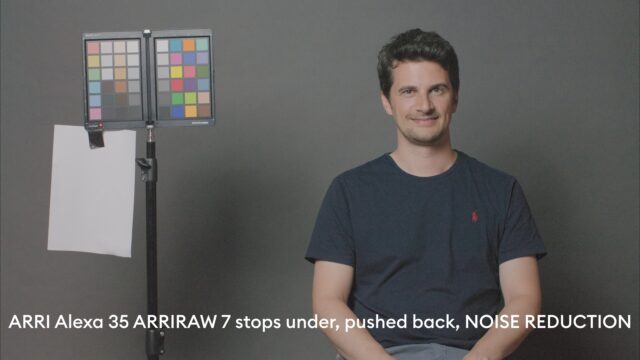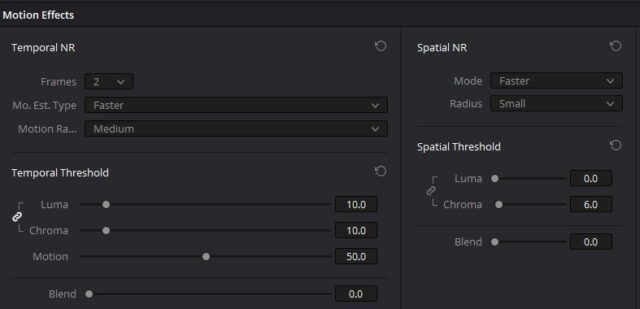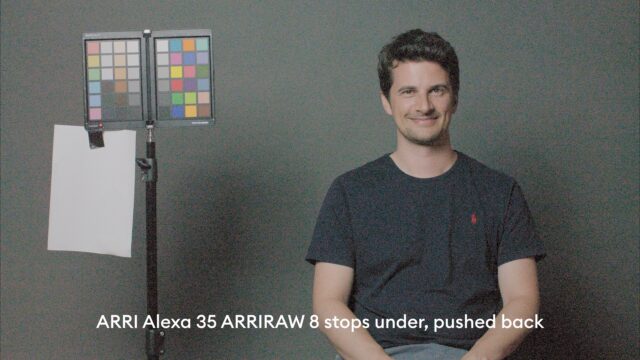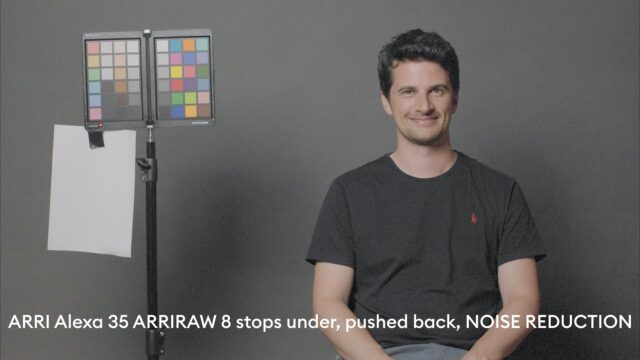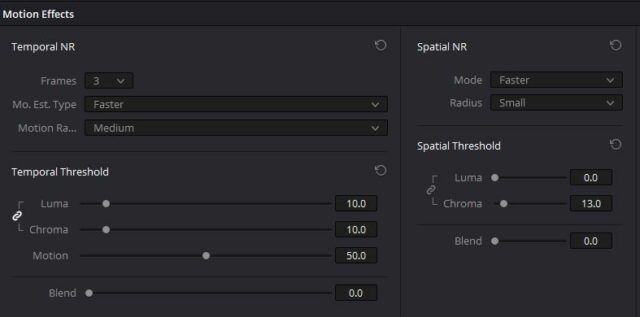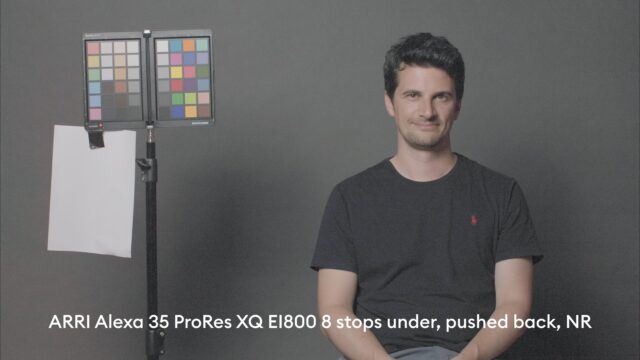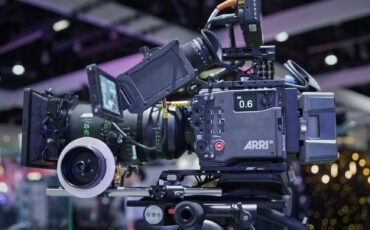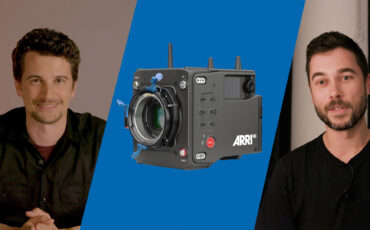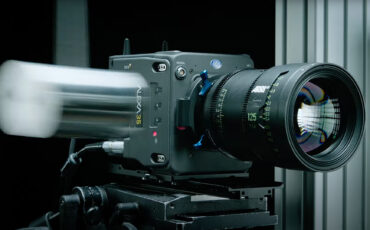ARRI ALEXA 35 Lab Test: Rolling Shutter, Dynamic Range and Latitude – plus Video!
Music Courtesy of Epidemic Sound
Yes, the new ARRI ALEXA 35 has arrived at the CineD headquarters! We were all super excited to get our hands on this new star in the camera universe and curious about what it has to offer. Also, we were hoping for a new lab test benchmark of course. Interested? Then let’s dive into our ARRI ALEXA 35 lab test!
Whenever a new full-fledged cinema camera arrives in our lab, we can’t wait to put it through the paces – like last time when the Sony VENICE 2 camera arrived, scoring a stunning new all-time low for rolling shutter performance (<3ms in full frame). As the ARRI ALEXA camera’s set the benchmark so far in terms of dynamic range (with 14+ stops), we almost couldn’t believe ARRI’s claims that this new ALEXA 35 camera pushes the dynamic range to an unbelievable 17stops.
This time we have an added bonus for you, as Nino and I discuss lab test results in a video as well. And, in addition, I took the ALEXA 35 for a spin and shot with my daughter – I just couldn’t resist the temptation when Nino said in a rather casual voice “Why don’t you take it over the weekend – if you like?”.
So, let’s get rolling! Once again, a big “thank you” goes to my dear colleague Florian Milz at CineD who helped me get this lab test shot. Here’s a band photo of us two, posing with the ALEXA 35 (sorry, we just had to ;-))
Rolling shutter of the ALEXA 35
Using our standard method to measure rolling shutter with our strobe light, we get 7.9ms in 3:2 4608×3164 open gate mode (I left the black bars on the right and left to indicate “open gate”):
That is a very good result (less is better). A 4.6K 16:9 window (full sensor width) translates to 5.7ms. However, the #1 spot in terms of rolling shutter still remains with the Sony VENICE 2 (full frame) with less than 3ms.
In 4K 16:9 mode (which is actually 4096×2304) the image is slightly cropped, and we get 7.6ms from 24 to 120 frames per second.
Dynamic Range of the ALEXA 35
Now, this is where it gets super interesting. Will we be able to see the claimed 17 stops? I actually got quite worried when ARRI mentioned in their press release something like 1.5 stops better highlight performance. This could mean a close call to still be able to fully clip the first patch of the Xyla21 stepchart that we use for our tests. The camera firmware version was 1.00.03.
If you are not aware of how we test dynamic range, please have a look here.
Finally in the lab, all was good but yes, it was close. If any camera manufacturer releases the next camera with an even better highlight performance we will have a problem …
Waveform of the ARRI ALEXA 35 in ARRIRAW open gate EI800
The waveform plot of our Xyla21 chart shows an astonishing 16 stops above the noise floor:
A solid 17th stop inside the noise floor as well as an 18th and 19th stop are visible as well. We are close to the limit of our 21-stop Xyla21 chart!
Also, you can see that the new LogC4 curve distributes the stop differently than previous ARRI Log curves. ARRI, therefore, provides a completely new set of LUTs for the ALEXA 35, which we are using here as well.
Let’s have a look at IMATEST – here, we are getting 15.1 stops at a signal-to-noise (SNR) ratio of 2, and 16.3 stops at SNR = 1
That’s astonishing – a new benchmark for our lab test! Comparing that to the ALEXA Mini LF that we tested here, that’s about 1.7 stops better at SNR = 2 and 1.4 stops better at SNR = 1 (the ALEXA Mini LF had 13.4 stops at SNR = 2 and 14.7 stops at SNR = 1 for ARRIRAW).
By the way, ProRes 4444 XQ showed very similar results, here is the IMATEST graph:
Out of curiosity, I checked also EI400, 1600, and 3200 and IMATEST always showed almost exactly the same results. Here is a result for ARRIRAW at EI3200:
What happens when you change the exposure index (EI) is basically that the signal values are distributed differently along the 12bit (ProRes 4444 XQ) or 13-bit (ARRIRAW) file, as can be seen in the waveform below for EI3200 in ARRIRAW (clipping, of course, happens at the same combination of lens iris settings and shutter for a given framerate):
Here, the 17th, 18th, and 19th stops are even better visible as code values are sitting higher.
Wow, what a result!
Latitude test of the ARRI ALEXA 35
Latitude is the capability of a camera to retain details and colors when over- or underexposed and pushed back to base exposure. Some time ago, we have chosen an arbitrary value of 60% luma value (in the waveform) for our subjects’ faces (actually the forehead) in our standard studio scene. This CineD base exposure should help our readers to get a reference point for all the cameras tested, regardless of how they distribute the code values and which LOG mode is used.
See the image below for our base exposure scene with the ALEXA 35, using the ARRI_LogC4-to-gamma24_Rec709-D65_v1-65 curve in combination with the following DaVinci Resolve settings (Version 18.0.1):
Now, we start to overexpose. Unfortunately, despite changing the light bulb of our studio light to a 2.5x stronger one (softbox and everything else the same), and using a Canon 50mm f1.2 lens we couldn’t get the red channel on Nino’s forehead even close to clipping (we are showing you the image with just the LUT applied, not corrected to give you a feeling on the overexposure – have a look also at the video):
As you can see, there is about 1 stop room for the red channel on Nino’s forehead. Brought back to base exposure, we get this image:
So we have to factor that in when we start to underexpose now.
Let’s look at 4 stops under, pushed back:
For the records, we are already at 9 stops exposure latitude (4 over to 4 under, plus 1 additional stop in the highlights). Every other camera including the Sony VENICE 2 was falling apart at that latitude level (save for the ALEXA Mini LF that showed 10 stops of exposure latitude).
So let’s jump ahead to 7 stops underexposure from our base, pushed back:
Here is the first time that some serious noise starts to kick in that is not really tolerable anymore without noise reduction. But judge yourself, have a look at the video above.
Noise reduction easily removes this noise:
What can be noticed is that colors start to fade, especially visible on Nino’s shirt (increasing the color boost for example easily corrects this).
Remember, we have reached (4 over to 7 under plus 1) = 12 stops of exposure latitude! That is already 2 stops more than the best camera ever tested, the ALEXA Mini LF.
Now let’s have a look at the 8 stops underexposed image:
Noise now really starts to corrupt the image to an extent that it becomes unusable – let’s have a look if noise reduction can save this:
Noise reduction cannot save this image without destroying all details – game over! Game over at 13 stops exposure latitude … how amazing is that? It still looks surprisingly good I have to admit though.
As expected, in ProRes 4444 XQ results are a tad worse – in ARRIRAW we are having 13bits at our disposal, in ProRes 4444 XQ “only” 12 bits. This shows especially in the noisy, shadow stops when they are being pushed up.
Here is the 8 stops underexposed image using noise reduction for EI800 in ProRes 4444 XQ:
So, in summary, we are getting 12 stops of exposure latitude – with some wiggle room towards 13! Amazing. The ALEXA Mini LF had 10 stops, the Sony VENICE 2 had 9 stops, the FUJIFILM X-H2S gets close to 9 and most other cameras are between 7 and 8 stops of exposure latitude – just to give you some reference!
ARRI ALEXA 35 lab test – Summary
As expected, the ARRI ALEXA 35 sets a new benchmark in our lab test for dynamic range and latitude. ARRI claims 17 stops – this stop sits already inside the noise floor, as can be seen in the waveforms above. However, with 13bits ARRIRAW using some noise reduction this stop is usable!
It will be interesting to see if other camera manufacturers are even remotely able to follow our new (and old) leader of the pack here.
Please have a look also at the video above, as a bonus feature, I included a little mini-doc with my daughter which allows you to see some real-world footage as well.
CineD Databases launched!
As you can see in the video above, we also launched our CineD Databases including all the Lab Test results in the Camera Database today. Check out the launch video and explanation article here to learn more!
Guys, what do you think of our ARRI Alexa 35 lab test? Let us know your thoughts in the comments section below!
